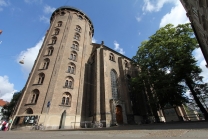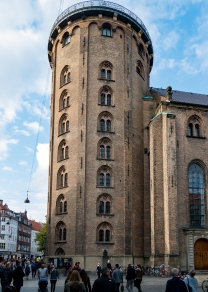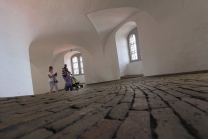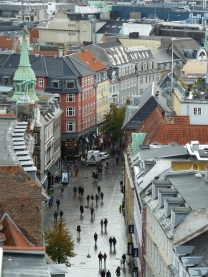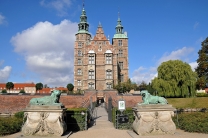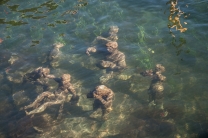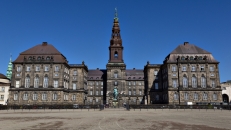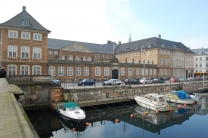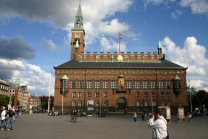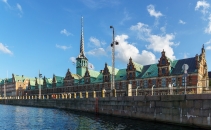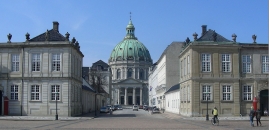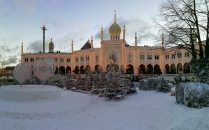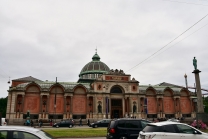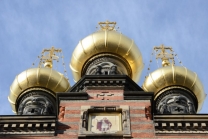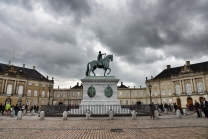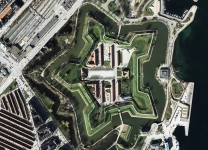Rundetaarn
No video yet

Rundetaarn
The Rundetaarn or Rundetårn (Round Tower) is a 17th-century tower located in central Copenhagen, Denmark, and one of the many architectural projects of Christian IV of Denmark, built as an astronomical observatory. It is most noted for its equestrian staircase, a 7.5-turn helical corridor leading to the platform at the top at 34.8 meters above ground, and for the expansive views which it affords over Copenhagen.
The tower is part of the Trinitatis Complex which also provided the scholars of the time with a university chapel, the Trinitatis Church, and an academic library which were the first facilities of the Copenhagen University Library which had been founded in 1482. Today, the Round Tower serves as an observation tower for views of Copenhagen, a public astronomical observatory, and a historical monument. The Library Hall above the church is only accessible along the tower's ramp and is a venue for exhibitions and concerts.
History
Background
Astronomy had grown in importance in 17th-century Europe. Countries had begun competing with each other in establishing colonies, creating a need for accurate navigation across the oceans. Many national observatories were therefore established, the first in 1632 at Leiden in the Dutch Republic. Only five years later the Round Tower Observatory, first referred to as STELLÆBURGI REGII HAUNIENSIS, would follow.
Planning and preparations
After Tycho Brahe had fallen out of favour and left Denmark, Christian Longomontanus had become Christian IV's new astronomer and the first professor of astronomy at the University of Copenhagen. In 1625 he suggested the king build an astronomical tower as a replacement for Brahe's Stjerneborg which had been demolished after his death in 1601.
Longomontanus' initial proposal was to erect the new observatory on the top of the hill Solbjerget, now known as Valby Bakke. But since there were also plans for the construction of a new students' church and a library for the university, the idea of merging the three buildings into one grand complex emerged.
Already in 1622, Christian IV had bought...


